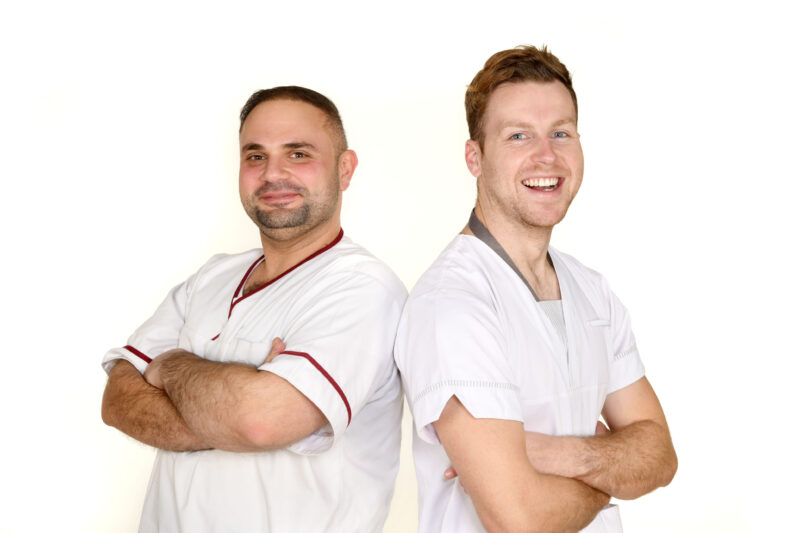
Diagnostic radiographers and radiology assistants are trained to operate special imaging machines using x-rays for medical purposes. They use cutting edge technology such as CT scanners, MRI, ultrasound machines, and digital fluoroscopy.
Diagnostic radiographers are also central to a wider multidisciplinary team, working and consulting with colleagues across various specialties.
Laith, senior diagnostic radiographer (CT)
Why did you want to be a diagnostic radiographer?
My passion to join the profession began at a young age as my mum used to repair x-ray equipment and I used to watch her whilst working. Also, since coming to the UK I have researched about different health careers and radiography was the one I thought suited me the most and I felt I can succeed in.
I have trained at the University of Cumbria and graduated in 2016. Since graduation I have worked at Sunderland Royal Hospital, where I have also trained. I am currently working as a senior diagnostic radiographer in CT at University Hospitals Tees.
Day-to-day tasks?
My day-to-day tasks involves working alongside my other colleagues to ensure the list is running smoothly whilst providing the highest and safest quality of care. This includes getting the patient ready, briefing them about their examination, gaining their consent, performing the scan, and discharging the patient with the relevant information about what will happen next.
I have also been involved in the supervision and training of students since I am an accredited mentor and assessor for both Teesside University and Cumbria University students.
Most fulfilling part of the job?
Making sure our patients receive high quality care with great patient satisfaction."
Andy, MRI assistant
Why did you want to be an MRI assistant?
I wanted to become an MRI assistant because I previously worked on the ward and had visited the MRI department several times with patients. I found the scans really interesting and felt that it would be great to be part of that team, helping patients with their diagnosis.
Day to day tasks?
I organise the patient lists and prepare the patients prior to their scans, for example if they need a cannula. I also assist the patients in positioning the coils for their MRI scans. I liaise with ward doctors and nurses to discuss the preparation needed for patients before they attend for their scans.
Most fulfilling part of the job?
The best part of my job is the patients and feeling like I make a difference to their care. I find MRI scans and the pathology very interesting, and the detail on the scans is brilliant.
The MRI team is amazing, definitely the best team to be part of."
Alice, diagnostic radiographer
Why did you want to be a diagnostic radiographer?
For me, radiography offered the perfect combination of skills; the use of state of the art technology, the application of anatomical knowledge, and communication skills – making it a job that both played to my strengths but also offered me further training and learning opportunities throughout my career.
Day-to-day tasks?
Diagnostic radiography can offer a great deal of variety, whether that means working in theatres, out-patients services in the community or working in acute inpatient settings.
Our main role is to produce images of diagnostic quality while balancing patient comfort and ensuring radiation doses are as low as possible.
Our role also involves supporting students and apprentices in their learning.
Most fulfilling part of the job?
I enjoy feeling that the work that we do contributes to the wider care of patients; that the images that we make can support other departments and clinicians to improve patients’ quality of life."
Why are AHPs important in mental health?
The NHS Long Term Plan describes AHPs as playing a central role in the delivery of person-centred care to help meet the changing demands the NHS is facing. The Mental Health Workforce Plan for England’ (2017) also highlights the vital and varied role of AHPs as first responders, in diagnosis, self-management, rehabilitation, and recovery of everyday life.
AHPs are the key to transforming health, care and wellbeing. Working at the top of their competencies and skills, AHPs lead mental health teams to new ways of working. Their expertise in rehabilitation and enablement is vital to move away from over-reliance on hospitals and towards professional interventions across health and social care settings.
What is the role of AHPs in services for people with mental health conditions?
AHPs are employed in health and care services to diagnose, treat, and support individuals to overcome the physical challenges that can be associated with their mental health
conditions.
Diagnostic radiographer video
Where can I study to be a diagnostic radiographer?
Work experience
Contact us
- Careers at South Tees: [email protected]
- Work experience at South Tees: [email protected]